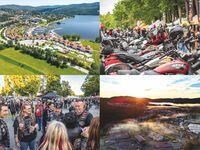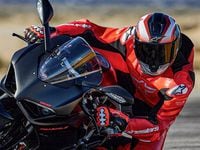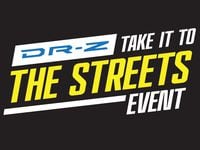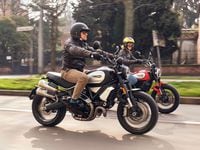After lapping with YCRS instructors Kyle Wyman or Chris Peris, my question is always the same, “Where am I slow?” These two fleet-footed racers bite back their immediate answer (“everywhere”) and simply give me the top flaw in my quest for consistent speed: “You’re over-slowing the entry; you’re braking too long.”
In my group of aging-racer friends, we call this “old man’s disease.” We might initiate braking relatively correctly (time and pressure), but we continue to slow our bikes a bit longer than racers like Chris and Kyle. We use less speed to tighten our radius, while Chris and Kyle run more speed because they run more lean angle to stay on the same radius.
So why don’t I trail-brake a little less, release the brakes earlier, and carry more lean angle like Chris and Kyle? Because I’m scared! I’m not confident that the tires will stick at a greater lean angle! At YCRS we equate “lean angle” with “risk” and use the words interchangeably; at 58 years of age, what risks will I accept in a sport that is supposed to be fun, or in a race (I race with AHRMA) that has only a trophy as the reward? Using the brakes a little longer in order to run less lean angle at the same radius is a good way to ride. Safe. Repeatable and thus consistent.
I’m not alone, am I? You too have your “lean-angle maximum” on the street or at the track. Is it because you’re not brave? Daring? Courageous? Maybe, but even my Marine Corps combat-veteran friend Mark Thompson realizes he is leaving additional lean angle on the riding table, and nobody can accuse him of cowardice.
Here’s what Mark wrote to me about risk, fear, and lean angle: “I suspect that risk is tied to motivation. Fear can be suppressed with proper motivation. Individually, we will take great risk for great reward.”
This is an interesting point, and racers often go quicker in the race than in practice because the increased motivation of points and purse pushes them to the next steps in risk taking. You will often see ultra-heroic efforts in Olympic finals and end-of-the-season championship contests because of motivation; greater risks are taken when rewards increase.
For those of us who ride on the street, we need to focus on Mark’s last line: Individually, we will take great risk for great reward. What is our reward for taking undue risk on public highways? That’s right: Zero. This is a great conversation to have with your riding friends, and I can send you a list of riders killed or hurt badly by pushing into that high end of the risk scale when surrounded by unmovable objects like guardrails and poorly trained, unfocused American drivers. To be very clear: Lots of lean angle means lots of risk. To add further clarity: Lots of lean angle comes from high midcorner speeds.
A common misconception is that riders who trail-brake on the street—riders like me, my staff, friends, and all Freddie Spencer School or YCRS graduates—are going entirely too fast for that environment. You’ve read that statement in the Comments section after several of my articles. Let’s look at trail-braking another way: as a lean-angle (risk) reducer.
If I had the feel/skills/risk tolerance of Chris or Kyle, I would let go of the brakes earlier to carry more entry speed, using additional lean angle to stay on line. Instead, I leave the brakes on another few feet and that additional speed reduction allows me to run their exact line, but at less lean angle. Less risk. The old man is having fun, and a big part of fun is staying within your risk tolerances/comfort levels but not being embarrassingly slow!
A side note: We all know riders quit riding due to crashes. The other reason bikes get sold or ignored in the garage is because the fun of riding is gone, or they can’t keep up with friends. They’ve slowed way down because the bike has crossed the centerline a few times and their confidence is shot. “Bike For Sale…with riding gear and extra oil filters.”
Yes, trail-braking into corners allows you to see further into the corner while you still have your speed, steering geometry, and front-tire contact patch control in use, but being able to slow your bike further into the corner with the brakes reduces lean angle at the same radius.
So why not just ride toward the corner more slowly? That’s an option, but apparently, it’s not a workable one because we continue to have back-road accidents in corners. Is that because we’re entering corners too fast or too slow? Right, too fast. Trail-braking allows a rider to continue to slow the bike well past the corner entry, rather than huck it in and hope the bike, tires, and brain can handle the necessary lean angle. The advice of “Just slow down” doesn’t work with most of our personalities, especially the Marine Corps riders we coach. Trail-braking is the technique that works to control speed, radius, and lean angle. Life-saving, fun-producing, and industry-growing. Just find any of our USMC ChampMil graduates and ask them about the increased joy of riding after only eight hours at one of our Level 3 classes.
Last fall, Judy and I headed up into the mountains on our dual sport bikes and found ourselves on a hard-packed dirt road that had been freshly graveled. There was very little traction! Judy was leading, and I watched as she trailed brake pressure into the continuous downhill corners while riding at speeds between 15 and 35 mph. Why?
Judy was slowing her bike for these corners, but wanted to leave the tire and fork loaded just past the turn-in. She didn’t want the fork to extend, unload the tire, and then hope for grip on the very loose surface. She couldn’t rely on lean angle to make the corners because we were on greased marbles; instead, she had to slow the bike into the corner because additional lean angle was simply not available.
Sign up here to receive our newsletters. Get the latest in motorcycle reviews, tests, and industry news, subscribe here for our YouTube channel.
Behind Judy, I was doing the exact same thing, struggling to find any traction or feel on the road. I knew that if I just cranked my XT600 into the corner sans brakes (no front-end load), it would wash immediately. We had never ridden this road before, had no idea where each corner went, so we were both trailing brake pressure past the turn-in (a great definition of trail-braking) because the tires would not stick without that technique, especially when surprised by a tighter radius than expected.
Riders, this example is exactly like riding at the limit on the track: Use the brakes a little longer to reduce the amount of lean angle necessary.
Cruiser riders, hearing anything vitally important? If you don’t have additional lean angle available due to dragging hard parts, trail-braking will change your riding life. Rather than ride into the corner off the brakes and hope your bike’s available lean angle gets you through, maintain a little brake pressure into the corner and continue to adjust speed, using less lean angle to make the radius. It has nothing to do with speed, everything to do with lowering risk. What’s risk? Lean angle.
Like many of you, I still love riding and racing but have lower risk tolerances at this point in life. Using brake pressure into the corner keeps me healthy on the track and street at the pace I choose to ride. Chris and Kyle are faster, but they too balance risk versus reward with the amount of trail-braking they use to achieve the amount of lean angle they are comfortable with.
Part 2 of Fear and Lean Angle next Tuesday!






/cloudfront-us-east-1.images.arcpublishing.com/octane/5G44Y3FXWNFSTEQKCA355PXOPU.jpg)

/cloudfront-us-east-1.images.arcpublishing.com/octane/XRI4GTLCVBA5NESASCBIR5LYQI.jpg)
/cloudfront-us-east-1.images.arcpublishing.com/octane/EF7566PXARGMBAOMLWTECYL3LE.jpg)





/cloudfront-us-east-1.images.arcpublishing.com/octane/3LASNXSWUZFFPISURDJF3OCWBU.jpg)
/cloudfront-us-east-1.images.arcpublishing.com/octane/2BHJKWUTBNBTLMQCKDNVEG6DKQ.jpg)
/cloudfront-us-east-1.images.arcpublishing.com/octane/MPHXIIV54NAU5L6E4SYZHCXVRM.jpg)



/cloudfront-us-east-1.images.arcpublishing.com/octane/WYXFHF4ZOBBTXELIZDB2FJXU64.jpg)
/cloudfront-us-east-1.images.arcpublishing.com/octane/K5FNV7ONUVDXJJ2H5BIWUGBGTI.jpg)
/cloudfront-us-east-1.images.arcpublishing.com/octane/MGVKP5VTNJHQ7FWNAHIWX4OHO4.jpg)
/cloudfront-us-east-1.images.arcpublishing.com/octane/6JEYTSIZQRHPJAVVPRLWZU63UM.jpg)
/cloudfront-us-east-1.images.arcpublishing.com/octane/XJU3VJZSDFEOVDBJTRXTTLTN5U.jpg)

/cloudfront-us-east-1.images.arcpublishing.com/octane/A6O3TEZF45BVFG2KKOUMPWEYM4.jpg)
/cloudfront-us-east-1.images.arcpublishing.com/octane/MHVFMH2YN5DT3EOZPLXKNFP3VM.jpg)
/cloudfront-us-east-1.images.arcpublishing.com/octane/VILA5L7CTBGOJGDKM2YAOCR6VU.jpg)